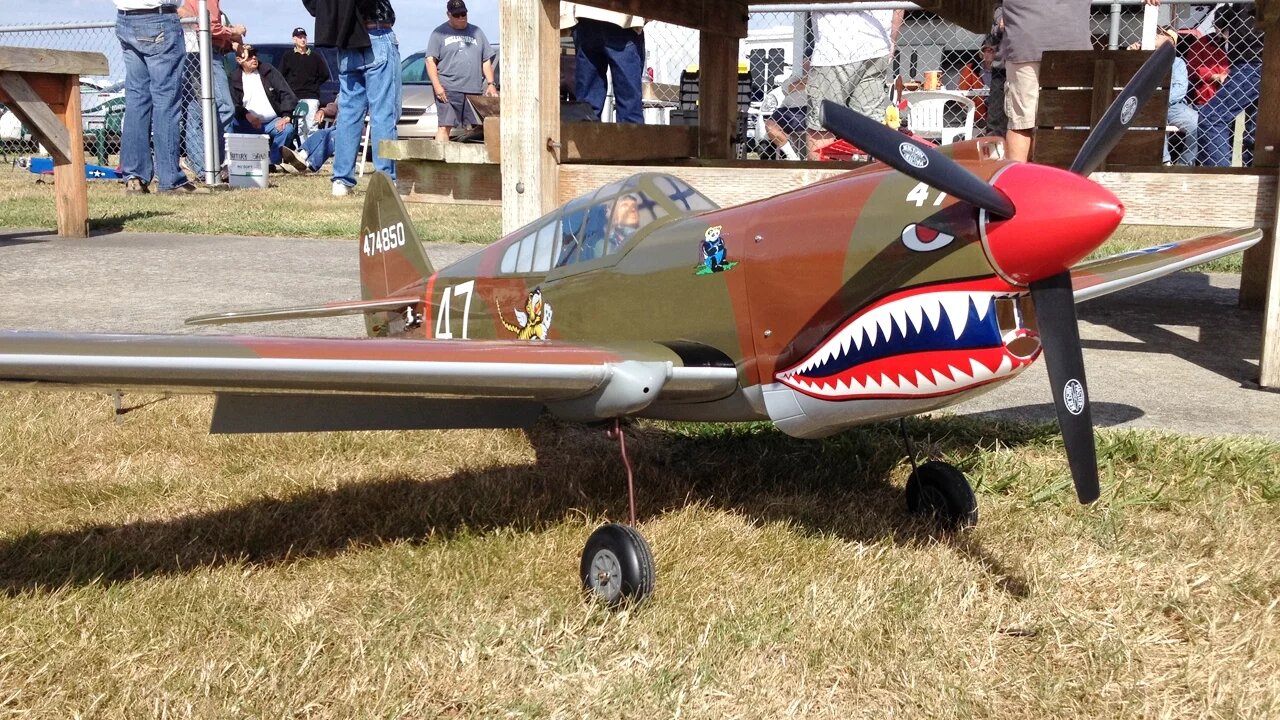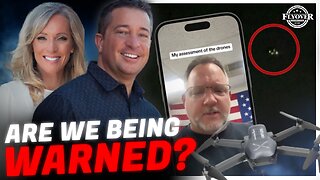Premium Only Content

Curtiss P-40 Warhawk Flying Tiger WWII Warbird RC Plane at Warbirds Over Whatcom
This video features footage of a Curtiss P-40 Warhawk Flying Tiger WWII Warbird RC Plane with a 62" wingspan flying at Warbirds Over Whatcom this year. I was able to capture some awesome footage of this really pretty P-40 RC Plane and I hope you like it.
Here is some history on the plane it is modeled after:
The Curtiss P-40 Warhawk was an American single-engined, single-seat, all-metal fighter aircraft and ground attack aircraft that first flew in 1938. The P-40 design was a modification of the previous Curtiss P-36 Hawk which reduced development time and enabled a rapid entry into production and operational service. The Warhawk was used by most Allied powers during World War II, and remained in frontline service until the end of the war. It was the third most-produced American fighter, after the P-51 and P-47; by November 1944, when production of the P-40 ceased, 13,738 had been built,[4] all at Curtiss-Wright Corporation's main production facilities at Buffalo, New York.
P-40 Warhawk was the name the United States Army Air Corps adopted for all models, making it the official name in the United States for all P-40s. The British Commonwealth and Soviet air forces used the name Tomahawk for models equivalent to the P-40B and P-40C, and the name Kittyhawk for models equivalent to the P-40D and all later variants.
P-40s first saw combat with the British Commonwealth squadrons of the Desert Air Force in the Middle East and North African campaigns, during World War Two in June 1941.[5][6] No. 112 Squadron Royal Air Force, was among the first to operate Tomahawks in North Africa and the unit was the first Allied military aviation unit to feature the "shark mouth" logo,[7] copying similar markings on some Luftwaffe Messerschmitt Bf 110 twin-engine fighters.[7] [N 1]
The P-40's lack of a two-stage supercharger made it inferior to Luftwaffe fighters such as the Messerschmitt Bf-109 or the Focke-Wulf Fw-190 in high-altitude combat and it was rarely used in operations in Northwest Europe in WW2. However, between 1941 and 1944, the P-40 played a critical role with Allied air forces in three major theaters: North Africa, the Southwest Pacific, and China. It also had a significant role in the Middle East, Southeast Asia, Eastern Europe, Alaska and Italy. It was also one of the first responders during the Pearl Harbor attack along with the F4F Wildcat.
The P-40 was originally conceived as a pursuit aircraft and was very agile at low and medium altitudes but suffered due to lack of power at higher altitudes. At medium and high speeds it was one of the tightest turning early monoplane designs of the war due to its great structural strength, [20] and it could out turn most opponents it faced in North Africa and the Russian Front. In the Pacific Theater, like all Allied Fighters it was out turned at lower speeds by the lightweight fighters A6M Zero and Nakajima Ki-43 "Oscar" which did not possess the structural strength of the P-40 for high speed hard turns. The American Volunteer Group Commander Claire Chennault advised against prolonged dog fighting with the Japanese fighters due to the resulting airspeed reduction which favored the lightweight Japanese designs low speed turning superiority.[21]
Allison V-1710 engines produced about 1,040 hp (780 kW) at sea level and at 14,000 ft (4,300 m): not powerful by the standards of the time and the early P-40 variants' top speeds were only average. Also, the single-stage, single-speed supercharger meant that the P-40 could not compete with contemporary designs as a high-altitude fighter. Later versions, with 1,200 hp (890 kW) Allisons or more powerful 1,400 hp Packard Merlin engines were more capable. Climb performance was fair to poor, depending on the subtype.[9] Dive acceleration was good and dive speed was excellent.[9] The highest-scoring P-40 ace, Clive Caldwell (RAAF), who claimed 22 of his 28½ kills in the type, said that the P-40 had "almost no vices", although "it was a little difficult to control in terminal velocity".[22] Caldwell added that the P-40 was "faster downhill than almost any other aeroplane with a propeller." The P-40 had one of the fastest maximum dive speeds of any fighter of the early war period and and good high speed handling.
Caldwell found the P-40C Tomahawk's armament of two .50 in (12.7 mm) Browning AN/M2 "light-barrel" dorsal nose-mount synchronized machine guns and two .303 Browning machine guns in each wing to be inadequate.[24] This was rectified with the P-40D (Kittyhawk I) which abandoned the synchronized gun mounts and instead had two .50 in (12.7 mm) guns in each wing, although Caldwell still preferred the earlier Tomahawk in other respects.
-
 6:44
6:44
GBLynden's RC
1 year agoTim's Modded FMS Pitts V2 1400mm RC Biplane
164 -
 54:12
54:12
Uncommon Sense In Current Times
17 hours ago $10.47 earned"Neither Batman nor the Good Samaritan: A Christian View Of Self-Defense in the Daniel Penny Case"
19.8K3 -
 59:57
59:57
The Tom Renz Show
18 hours ago"Health and Health freedom - next steps"
9.98K3 -
 39:40
39:40
PMG
15 hours ago $10.07 earned"Paulo Figueiredo, Mehek Cooke, Ashley Hayek, Mark Mitchell- The Breanna Morello Show"
50.3K4 -
 3:37:41
3:37:41
Fresh and Fit
8 hours agoGirls React To Lily Philips Sleeping With 100 Guys
137K64 -
 27:00
27:00
Stephen Gardner
10 hours ago🔥McConnell ATTACKS Trump | HUGE Update on MILITARY DRONES mission!!
115K156 -
 8:10:03
8:10:03
Dr Disrespect
19 hours ago🔴LIVE - DR DISRESPECT - WARZONE - HUNTING SEASON
263K77 -
 1:32:28
1:32:28
Fresh and Fit
12 hours agoHow To Wholesale and Fix & Flip Real Estate!
75.7K11 -
 1:30:55
1:30:55
Flyover Conservatives
1 day agoDrones, Darkness, and Divine Intervention: Unpacking Prophecy and Reality - Dr. Troy Spurrill | FOC Show
47.6K3 -
 59:32
59:32
The StoneZONE with Roger Stone
10 hours agoHonoring Great American Patriots for Helping to Save our Country | The StoneZONE w/ Roger Stone
98.1K8